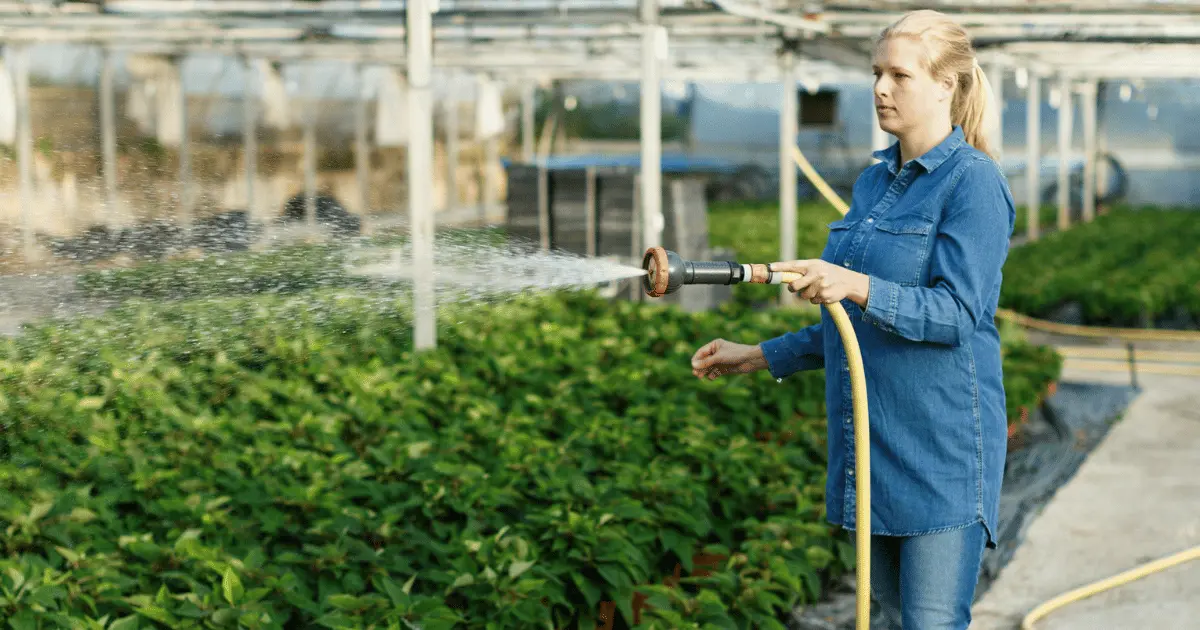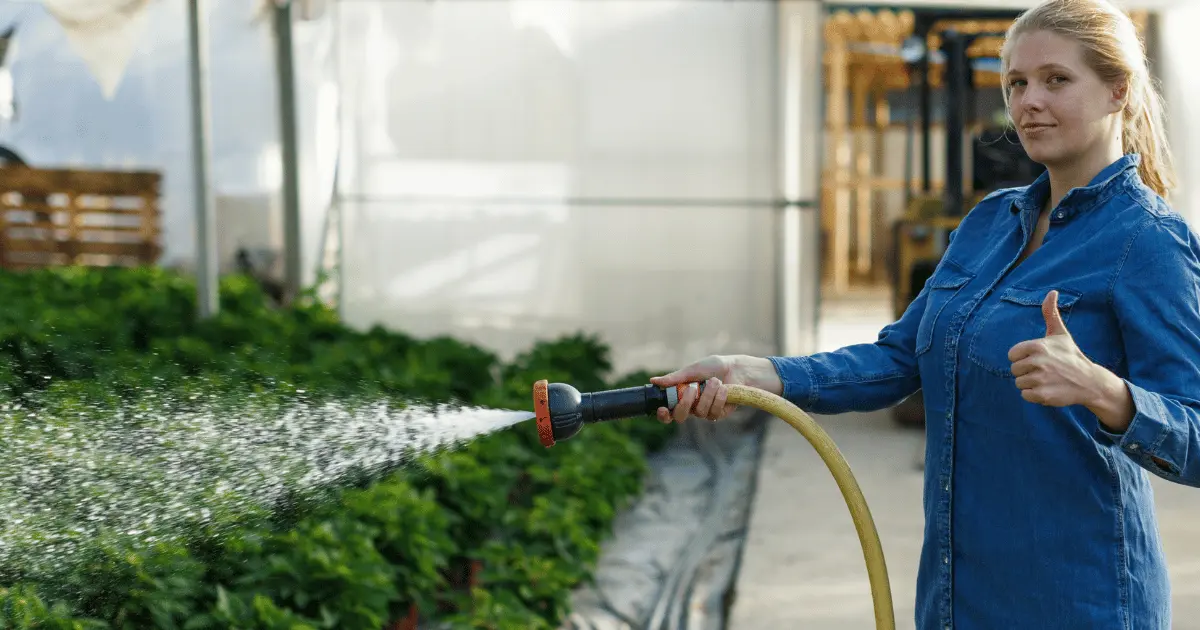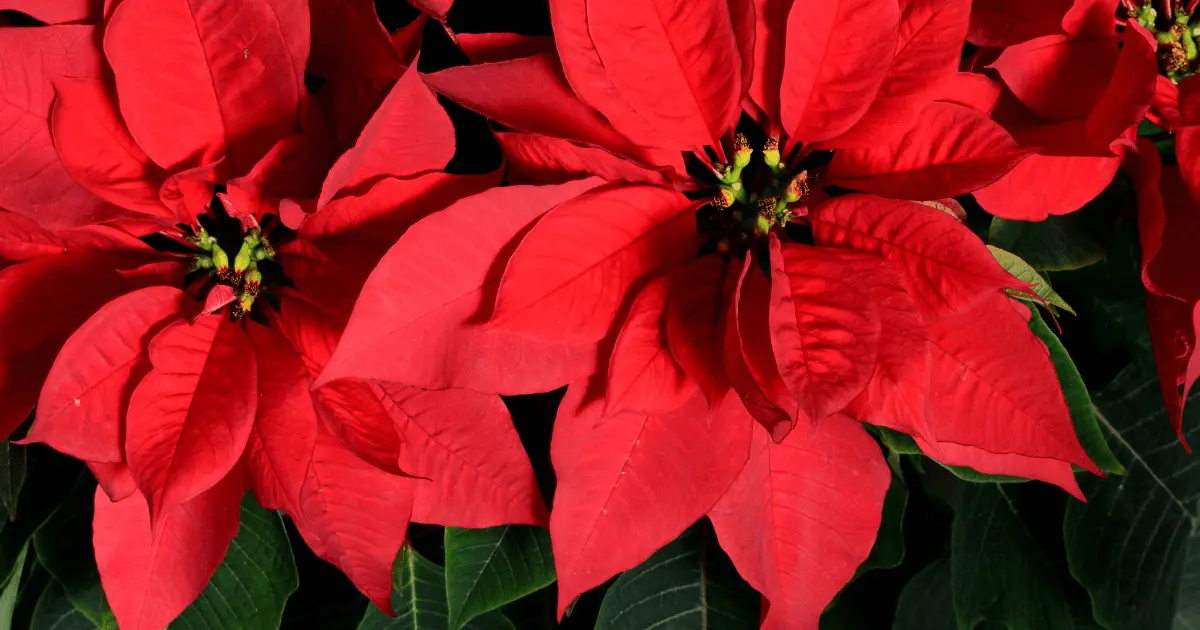Nothing announces the holiday season like a poinsettia in ruby red. They brighten my home during the winter holidays. I love using different colors to make wreaths to beautify my house during Christmas. They can be challenging to take care of, but with the proper consideration and poinsettia care, they can flourish in most residential conditions.
I’m about to teach you good care for your poinsettias so you can enjoy them for as long as possible. All you need is to keep reading, and you’ll see the essential tips I’ve put out to help you tend to your plants.
How to Water Poinsettia

As soon as you get the poinsettia home, check the bottom of the pot. It’s crucial to drill a hole as quickly as possible if the pot still needs to have at least one drainage hole. The roots may decay pretty fast if the pot cannot drain. Additionally, removing any decorative foil can make the poinsettia happier because it might contain water that can damage the plant. Ensure the foil is completely drained after each watering if you are not prepared to remove the pot’s shiny covering.
The ideal method for watering a poinsettia plant is to place it in the kitchen sink. Then, slowly saturate it with water until it drips out the drainage hole. Set the pot on a plate or tray after letting it stand in the sink to allow any extra moisture to drain. Never let the pot float in a liquid. Keep the poinsettia where it gets six to eight hours of direct sunlight daily. Keeping the plant away from drafts and heat vents will prevent the leaves from dropping.
How Much Water Does My Poinsettia Need?
Too much watering is just as detrimental to poinsettia plants as not enough. The top of the potting soil, which should feel damp and cold to the touch, is the best place to assess whether a poinsettia needs water. Water is necessary if the soil seems dry. Additionally, if you can raise the pot with little effort at all, the soil is arid.
The potting soil should never be saturated or soaking wet, just slightly moist. Potting soil can quickly dry out in warm, indoor air, so it’s best to check the plant daily to be safe. Soon enough, you won’t need to check the plant as frequently to determine how much water it needs.
The most frequent error with poinsettias is overwatering. Therefore it’s crucial to allow the water to drain. A poinsettia’s water requirements vary based on the climate, location, and size of the plant and its container. Give no more than a small glass of water to a pot with a 5-inch. diameter. It keeps the soil’s huge pores from becoming clogged and waterlogged.
You shouldn’t supply more than one shot glass of water to little poinsettias. After 10 minutes, drain any extra water in the planter because it could cause overwatering. If in doubt, it’s preferable to maintain these plants slightly drier than damp and to water them sparingly but frequently rather than infrequently but heavily.
Poinsettias should only be watered when the soil is visibly dry, which can be every day or every three days. Mini poinsettias will probably require daily watering, so pay additional attention to smaller pots as they dry up more quickly.
How Often To Water My Poinsettia

Place the poinsettia in a well-lit location in your house that is away from drafts and heating vents. Once a week, or when the soil seems dry to the touch or the pot gets light, water the poinsettia. Before replanting the plant, please give it a good soak in the sink and let the water drain.
When the top layer of soil seems dry, water your poinsettia plant only then. Ensure the soil is entirely moist to the point where water is dripping from the bottom of the growing container. Any extra water that accumulates in the saucer or attractive foil pot cover should be discarded.
Poinsettias need water when the soil feels dry to the touch. Keep them away from drafty areas and places with high temperatures, like indoor plants. Also, keep them away from fireplaces and appliances (again, a heat issue).
How To Care For Poinsettias

Before purchasing your poinsettia, begin your poinsettia care regimen by selecting a healthy plant from a good garden center. When choosing a high-quality plant, look for healthy, lush foliage and develop yellow flowers between the colored bracts. Also, make sure you purchase your poinsettias from an indoor nursery and make sure they do not place them next to automated doors.
Additionally, a considerate vendor will ensure that the poinsettia is well watered. Check the compost by feeling it to ensure it is neither sandy dry nor sopping wet. To keep your poinsettia safe from drafts and temperatures below 54°F (12°C), wrap it in paper before you leave for home. This shields it against initially undetectable harm but may result in early leaf loss within a few days.
Take the pot out of its sleeve and set it on a saucer when you bring it home. Be cautious while using pot sleeves because they can accumulate too much water, which could kill the plant. Ensuring the poinsettia obtains the proper temperature all year round is crucial to poinsettia maintenance. Place the plant near a window in a well-lit area, and keep it between 59° and 72° Fahrenheit (15° and 22° Celsius) there.
Although poinsettias usually dislike direct sunlight, this is less of a concern in the winter. Hence, keep your plant close to a window, preferably one that faces south during the holiday season. Just be careful to move it away from there as the warmer months draw closer to prevent its leaves from burning. Additionally, make an effort to reduce drafts by avoiding open entrances, windows, and fireplaces and taking a more covered position.
How To Keep My Poinsettia Alive All Through The Year
A poinsettia needs occasional watering and fertilization to stay alive all year long when it’s not in bloom. When taken care of properly, poinsettias’ bracts and flowers can last for a few months. Reduce the stem and prune the old leaves and flowers once the plant has finished blooming in the spring. In the warmer months, keep an eye on the room’s temperature and relocate to a less sunny area.
Poinsettias can be challenging to get to bloom the following Christmas again. However, you can help them by giving them water and fertilizer from time to time all year long. Re-pot your poinsettia if it outgrows its current container, and use good potting soil. Poinsettias grow best in a loamy or peat-based soil mixture that is somewhat acidic and well-draining.
